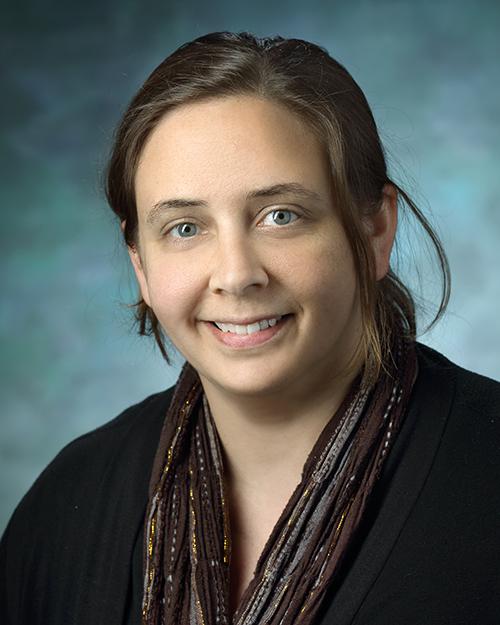Research Lab Results
-
Theresa Shapiro Laboratory
The Theresa Shapiro Laboratory studies antiparasitic chemotherapy. On a molecular basis, we are interested in understanding the mechanism of action for existing antiparasitic agents, and in identifying vulnerable metabolic targets for much-needed, new, antiparasitic chemotherapy. Clinically, our studies are directed toward an evaluation, in humans, of the efficacy, pharmacokinetics, metabolism and safety of experimental antiparasitic drugs.
-
Tamara O'Connor Lab
The O'Connor Lab studies the molecular basis of infectious disease using Legionella pneumophila pathogenesis as a model system. We are looking at the network of molecular interactions acting at the host-pathogen interface. Specifically, we use L. pneumophila pathogenesis to examine the numerous mechanisms by which an intracellular bacterial pathogen can establish infection, how it exploits host cell machinery to accomplish this, and how individual proteins and their component pathways coordinately contribute to disease. We are also studying the role of environmental hosts in the evolution of human pathogens. Using genetics and functional genomics, we compare and contrast the repertoires of virulence proteins required for growth in a broad assortment of hosts, how the network of molecular interactions differs between hosts, and the mechanisms by which L. pneumophila copes with this variation.
-
Ron Banerjee Lab
Our research aims to expand the understanding of how hormones regulate pancreatic islets in health and disease. Currently, a major focus of the lab is to define the normal adaptations of islets, particularly insulin-producing beta-cells, to the metabolic stress of pregnancy, and to determine how defective adaptation contributes to gestational diabetes mellitus (GDM). We anticipate that elucidating physiologic mechanisms of gestational beta-cell adaptation will identify novel therapeutic strategies to expand functional beta-cell mass which would help in the treatment of all types of diabetes. -
Rao Laboratory
The Rao Laboratory studies the roles of intracellular cation transport in human health and disease using yeast as a model organism. Focus areas include intracellular Na+(K+)/H+ exchange and Golgi CA2+(MN+) ATPases. -
Richard Rivers Lab
The Richard Rivers Lab researches vascular communication with a focus on microcirculation physiology. Our team seeks to determine how metabolic demands are passed between tissue and the vascular network as well as along the vascular network itself. Our goal is to better understand processes of diseases such as cancer and diabetes, which could lead to the development of more targeted drugs and treatment. We are also working to determine the role for inwardly rectifying potassium channels (Kir) 2.1 and 6.1 in signaling along the vessel wall as well as the role of gap junctions. -
Svetlana Lutsenko Laboratory
The research in the Svetlana Lutsenko Laboratory is focused on the molecular mechanisms that regulate copper concentration in normal and diseased human cells. Copper is essential for human cell homeostasis. It is required for embryonic development and neuronal function, and the disruption of copper transport in human cells results in severe multisystem disorders, such as Menkes disease and Wilson's disease. To understand the molecular mechanisms of copper homeostasis in normal and diseased human cells, we utilize a multidisciplinary approach involving biochemical and biophysical studies of molecules involved in copper transport, cell biological studies of copper signaling, and analysis of copper-induced pathologies using Wilson's disease gene knock-out mice. -
Salzberg Lab
Research in the Salzberg Lab focuses on the development of new computational methods for analysis of DNA from the latest sequencing technologies. Over the years, we have developed and applied software to many problems in gene finding, genome assembly, comparative genomics, evolutionary genomics and sequencing technology itself. Our current work emphasizes analysis of DNA and RNA sequenced with next-generation technology. -
Shigeki Watanabe Lab
Research in the Shigeki Watanabe Lab focuses on the cellular and molecular characterizations of rapid changes that occur during synaptic plasticity. Our team is working to determine the composition and distribution of proteins and lipids in the synapse as well as understand how the activity alters their distribution. Ultimately, we seek to discover how the misregulation of protein and lipid compositions lead to synaptic dysfunction. Our studies make use of cutting-edge electron microscopy techniques in combination with biochemical and molecular approaches.
-
Seydoux Lab
The Seydoux Lab studies the earliest stages of embryogenesis to understand how single-celled eggs develop into complex multicellular embryos. We focus on the choice between soma and germline, one of the first developmental decisions faced by embryos. Our goal is to identify and characterize the molecular mechanisms that activate embryonic development, polarize embryos, and distinguish between somatic and germline cells, using Caenorhabditis elegans as a model system. Our research program is divided into three areas: oocyte-to-embryo transition, embryonic polarity and soma-germline dichotomy. -
Sesaki Lab
The Sesaki Lab is interested in the molecular mechanisms and physiological roles of mitochondrial fusion. Mitochondria are highly dynamic and control their morphology by a balance of fusion and fission. The regulation of membrane fusion and fission generates a striking diversity of mitochondrial shapes, ranging from numerous small spheres in hepatocytes to long branched tubules in myotubes. In addition to shape and number, mitochondrial fusion is critical for normal organelle function.





